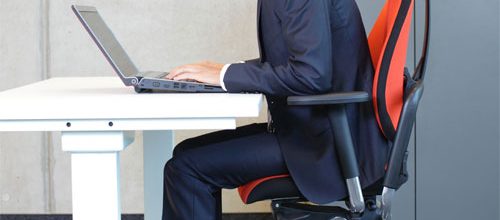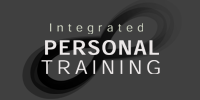
RECOGNISE YOUR BAD POSTURE HABITS
Poor sitting and standing habits can cause pain, sleepless nights and change our body shape.
While improving your posture isn’t likely to address the root cause of pain, it can help with muscle tension. It will probably feel strange when you first start correcting your posture as your body is used to you sitting and standing in a specific way. But by re-training your body to sit and stand correctly, you’ll improve your body awareness and your confidence in your back as a strong and resilient structure. And, with some practice, good posture will become second nature – and one step further to helping your back in the future.
Slouching in a chair
Sitting slumped with no lower back support probably feels more comfortable than sitting upright as it requires less effort from your muscles. While slouching doesn’t always cause discomfort, over time it can strain already sensitive muscles and soft tissues which can increase tension and turn to pain.
Sticking your bottom out
If your bottom tends to stick out or you have a pronounced curve in your lower back, you may have ‘hyperlordosis’. This exaggerated inward curve in the lower back is caused by having excess stomach weight or wearing high heels.
We recommend core and buttock strengthening exercises, hip flexor and thigh stretches, as well as making an effort to stand correctly. You can do this by imagining you have a string attached to the top of your head pulling you upwards. Your body is in perfect alignment, maintaining your spine’s natural curvature, your neck straight and your shoulders parallel with your hips.
- Keep your shoulders back and relaxed
- Pull in your abdomen
- Keep your feet about hip distance apart
- Balance your weight evenly on both feet
- Try not to tilt your head forward, backward or sideways
- Keep your legs straight but knees relaxed
- Standing with a flat back
A flat back means your pelvis is tucked in and your lower back is straight without a natural curve, causing you to stoop forward. Apart from making it difficult to stand for long periods of time, you also tend to lean your neck and head forwards causing neck and upper back strain. This posture can be caused by long periods sitting down or by muscle imbalances.
To help correct a flat back, do exercises to strengthen your core, buttocks, neck and rear shoulder muscles and back extensions.
Leaning on one leg
Leaning more on one leg while standing – sometimes referred to as ‘hanging on one hip’ – can feel comfortable, especially if you’ve been standing for a while. Rather than use your buttocks and core muscles to keep you upright, you put excessive pressure on one side of your lower back and hip which can result in you developing muscle imbalances around the pelvis and cause muscular strain in the lower back and buttocks. Uneven hips can also be caused by carrying heavy backpacks on one shoulder or carrying toddlers on one hip. Try to get into the habit of standing with your weight evenly distributed. Exercises to strengthen your buttocks and core muscles will help correct uneven hips.
Hunched back and ‘text neck’
If you work on a computer for several hours a day, you’ll probably unconsciously adopt poor postural habits like hunching over your keyboard – usually a sign of a tight chest and weak upper back. Over time, you could develop a rounded upper back causing shoulder and upper back stiffness.
Your head also tends to lean forward leading to poor posture – also the result of using a mobile phone and therefore called ‘text neck’. To help correct a hunched back, do upper back, neck and rear shoulder-strengthening exercises, chest stretches and neck posture drills.
Poking your chin
Many people unconsciously poke their chin forwards when looking up at a computer screen or TV screen – the result of sitting too low, having the screen set too high, a hunched back or all three. An unsupported lower back or hunched upper back encourage the neck to lean and to tip the head downwards. So to compensate for this downward pressure, we lift our chin to look forward without straightening the back.
Improve your sitting habits and do exercises to improve your posture to correct a poking chin.
Rounded shoulders
To check if you have rounded shoulders, stand in front of a mirror and let your arms hang by your sides. If your knuckles face forward, you may have a tight chest and a weak upper back, giving the appearance of rounded shoulders. Poor posture habits, muscle imbalances and an uneven exercise regimen all cause rounded shoulders. By focusing too much on chest strength and neglecting your upper back, muscle imbalances result in poor shoulder positioning. Do core-strengthening exercises and exercises that strengthen your upper back and chest muscles to help correct rounded shoulders.
Cradling your phone
By holding your phone handset between your ear and shoulder, you’ll place strain on your neck, upper back and shoulder muscles as they’re not designed to hold this position for a long time. This posture can place strain on the muscles and other soft tissues and lead to muscle imbalances between the left and right side of your neck. Get into the habit of holding your phone with your hand or use a hands-free device.
Changing habits is difficult. But if you start to spot bad habits now, you can start making a difference to improving your lifestyle and preventing problems in the future.
To find out what is the best workout for you contact our fitness experts.





